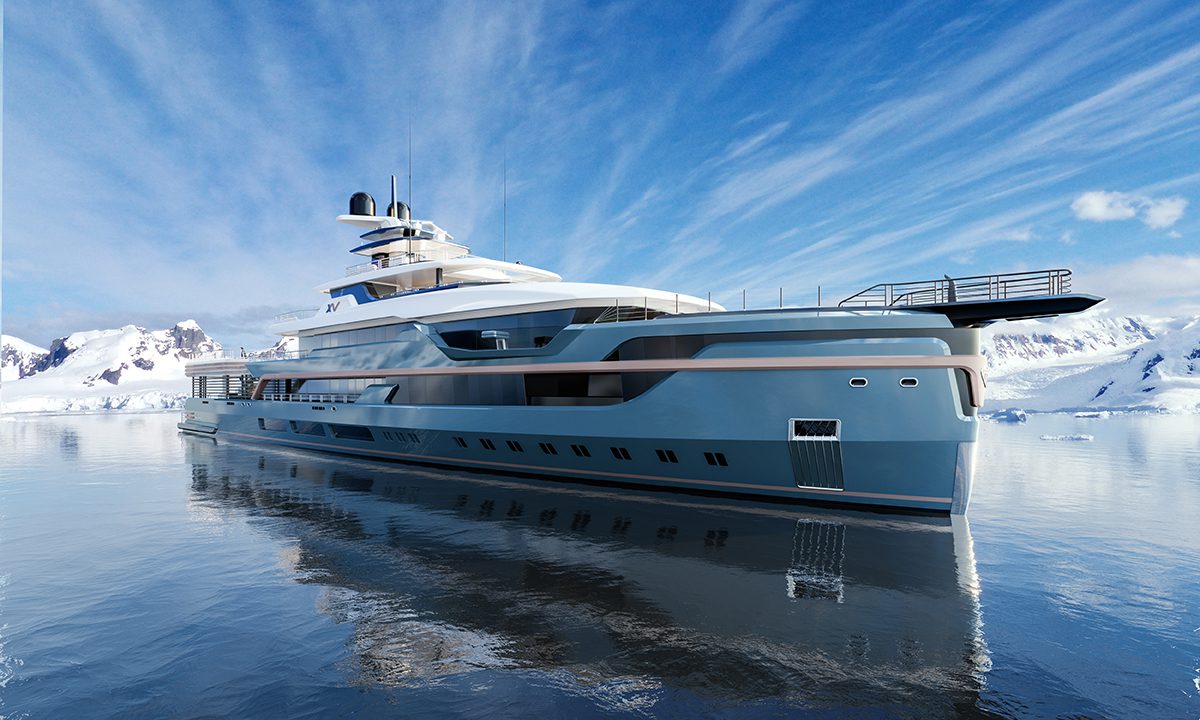 Aino Grapin is CEO of Winch Design, an international design studio for luxury planes, homes and most famously, yachts. Here, Grapin speaks to Samantha Welsh about the increased focus on sustainability in yacht design and the special requests of next generation yacht owners
Aino Grapin is CEO of Winch Design, an international design studio for luxury planes, homes and most famously, yachts. Here, Grapin speaks to Samantha Welsh about the increased focus on sustainability in yacht design and the special requests of next generation yacht owners
1. What was the founding vision for Winch Design 36 years ago?
Drawing inspiration from Andrew’s own passion for sailing and the sea, Winch Design first began in 1986 by focusing its creativity on sailing and motor yachts. With a 36-year heritage in superyacht design, our studio is now creating projects across land, air and sea.
The challenge we set ourselves for each day is to realise the dreams of our clients. Their aspirations are, in themselves extraordinary in their sophistication and scale, inviting a creative response that has to be both unique and full of imagination.
2. Deeply embedded at the outset in environmental and social responsibility, how is the company working to meet UN sustainable development goals at studio level?
Andrew had a genuine interest in sustainability very early before it became such a hot topic and has driven that passion into the business. We have created our own ‘Life Worth Living’ plan to care for people and the planet through four key pillars: protecting our air, land and sea, caring for our communities, leading our industries and transforming our business. We have also partnered with the Water Revolution Foundation and signed their Code of Conduct, committing to prioritising sustainability throughout our entire supply chain.
Follow LUX on Instagram: luxthemagazine
At studio level, we have a dedicated sustainability specialist whose responsibility it is to research, source and test, not only materials, but suppliers too. They manage a resource matrix of sustainable suppliers that analyses and tracks their methods of sourcing, manufacturing and application of each material to check it meets the correct criteria.
3. Data shows the average age of a boat buyer has decreased by over ten years since the pandemic, what does this new generation want from a luxury fit-out?
We are seeing an increase of younger owners, who are typically more in-tune with the effects of climate change and ocean pollution and are more likely to request or be open to innovative and sustainable yacht design.
In terms of interiors, younger clients do not like the high-gloss and dark wood finishes which are typically associated with traditional yacht interiors. Natural textures and experimental finishes are more popular with younger clients.

Younger clients are also asking for more informal social spaces, a step away from formal dining and entertainment styles traditionally found. This is showing that guests really want to switch off when they’re at sea. Clients are staying on board longer and require more multi-functional spaces.
Explorer yachts are also gaining popularity with the younger crowd. Clients want to be able to navigate around the globe for extended periods of time in a 7* environment. Their yacht must be able to thrive in any environment, no matter how harsh.
4. At project inception, how do you persuade clients to make sustainable choices?
We make sure to introduce all of our clients to sustainable options right at the start of the process. The choice of sustainable materials becomes a part of the narrative of the project and we educate our clients to understand that sustainable options don’t mean you have to compromise on luxury.

5. Where are you focusing your design energies?
Alongside sustainability factors and the increased popularity in explorer yachts, we are seeing an increased focus on the use of glass on yachts. Huge expanses of glass are being used, to bring the outside in and allow clients to feel immersed in their surroundings. This yearning for a connection with nature has also led to the increase in more refined, natural interiors, with open grain woods, soft, light furnishings and even living walls of greenery.
Read more: Markus Müller on Nature Economy
We have no set house design style and as a result each project we complete is totally unique. Currently we are working on a variety of projects across our yacht, aviation and architecture studio. These include VIP submarines, the world’s largest twinjet plane and the OWO (Old War Office) penthouse.

6. What do clients most want from their time at sea?
Our clients want time to switch off, enjoy time with their family and friends and explore new destinations in complete privacy.
Find out more: winchdesign.com
















Recent Comments